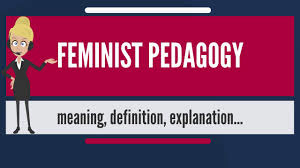During this year-long exploration, I have started to look into different pedagogies that have evolved over time. This running bibilography compiles the sources I have read through so far that dive into the world of feminist pedagogy. Many of these sources include information about changing pedagogy for the inclusivity of a variety of learners. In the age of globalization, many schools and universities are finding their institutions filled with learners from all backgrounds and countries around the world. This shift requires a shift in pedagogy, one that many do not fully understand.
I have found that bell hooks’s Teaching to Transgress outlines a methodology befitting this new wave of learning and inclusivity. Chapter 1 of her book talks about her personal journey through education. She explains how the best connections she had made with professors always stemmed from those who were able to go beyond the normal boundry of student and professor. These professors have the ability to include their students in a part of their personal lives and enhance their education beyond the classroom. Going beyond the classroom creates a human element that inspires many learners to go beyond their usual limits. She includes an example of a student article written about one of her classes. The way she describes their relationship illustrates the possibilities that might come from going beyond the normal duties of a professor.
Before reading hook’s Teaching to Transgress, I read chapter one of Paulo Freire’s Pedagogy of the Oppressed. Even though it’s an older source, this first chapter put me in a space I had not spent much time in before. The space of creating a pedagogy for the oppressed. At first, I could not understand how to effectively create a space for all learners to reach their potential. I talked with Christina Katopodis who is one of my sponsors for this project. She helped me to understand the dangers of the tradition teaching method where the teacher has all of the knowledge and the student has none, so therefore the student must listen to them without question. This type of teaching style enforces many kinds of oppression as the students do not have the room to explore their own personal interests. When a teacher allows room for student agency, the oppressed have the ability to grow as they wish to grow.
So far, these readings have launched me into a space for the diverse learner. Having these conversations allows for classrooms to grow as they fill with a variety of learners. I am still looking for more feminist pedagogy resources! If you have any ideas, post them in the comments below! Also, today I will be at the museum to start logistically planning for the Ridpath exhibit! Check for a post tomorrow to see what we come up with!
Picture via youtube.com

One response to “Running Bibliography: Feminist Pedagogy”
Thank you for sharing your resources with us! Looking forward to following along as you add more.